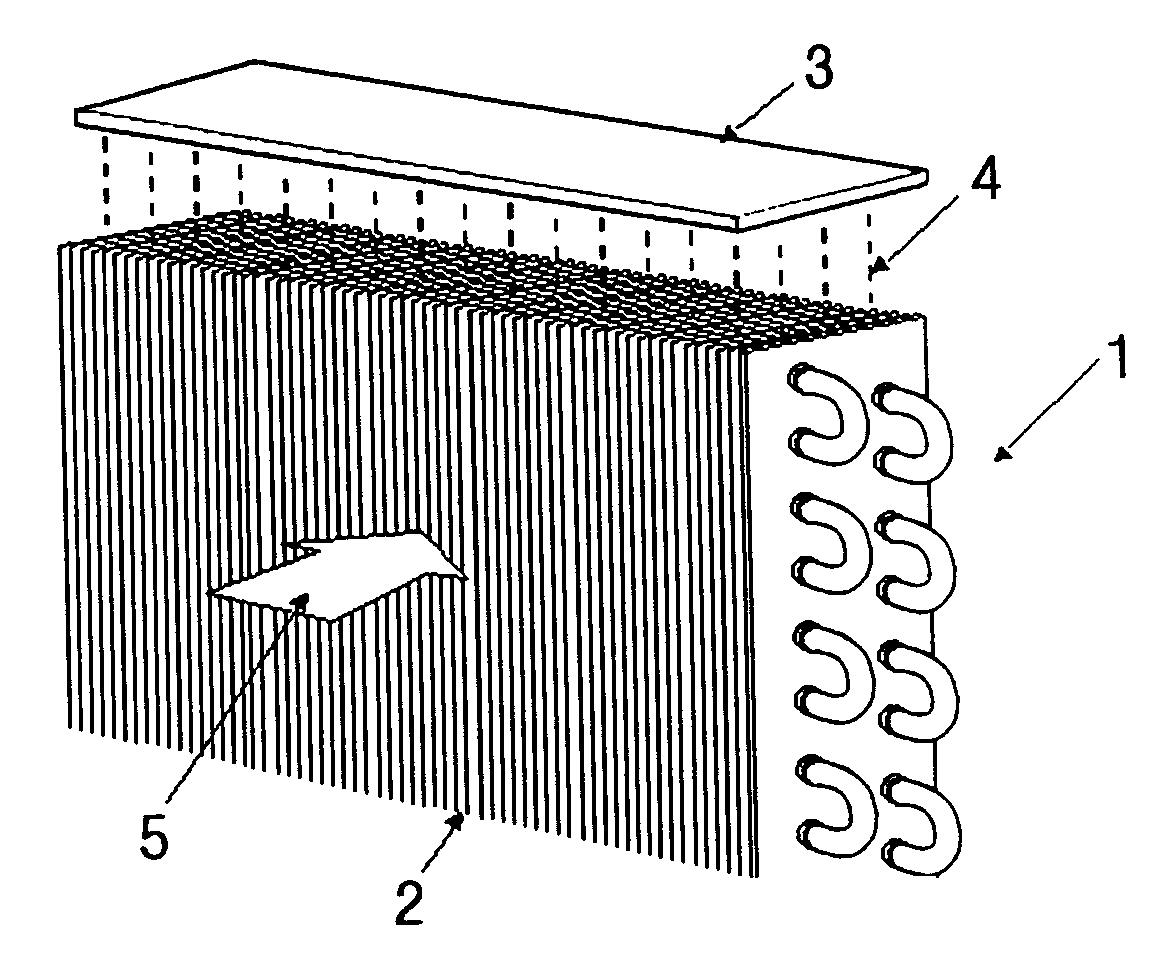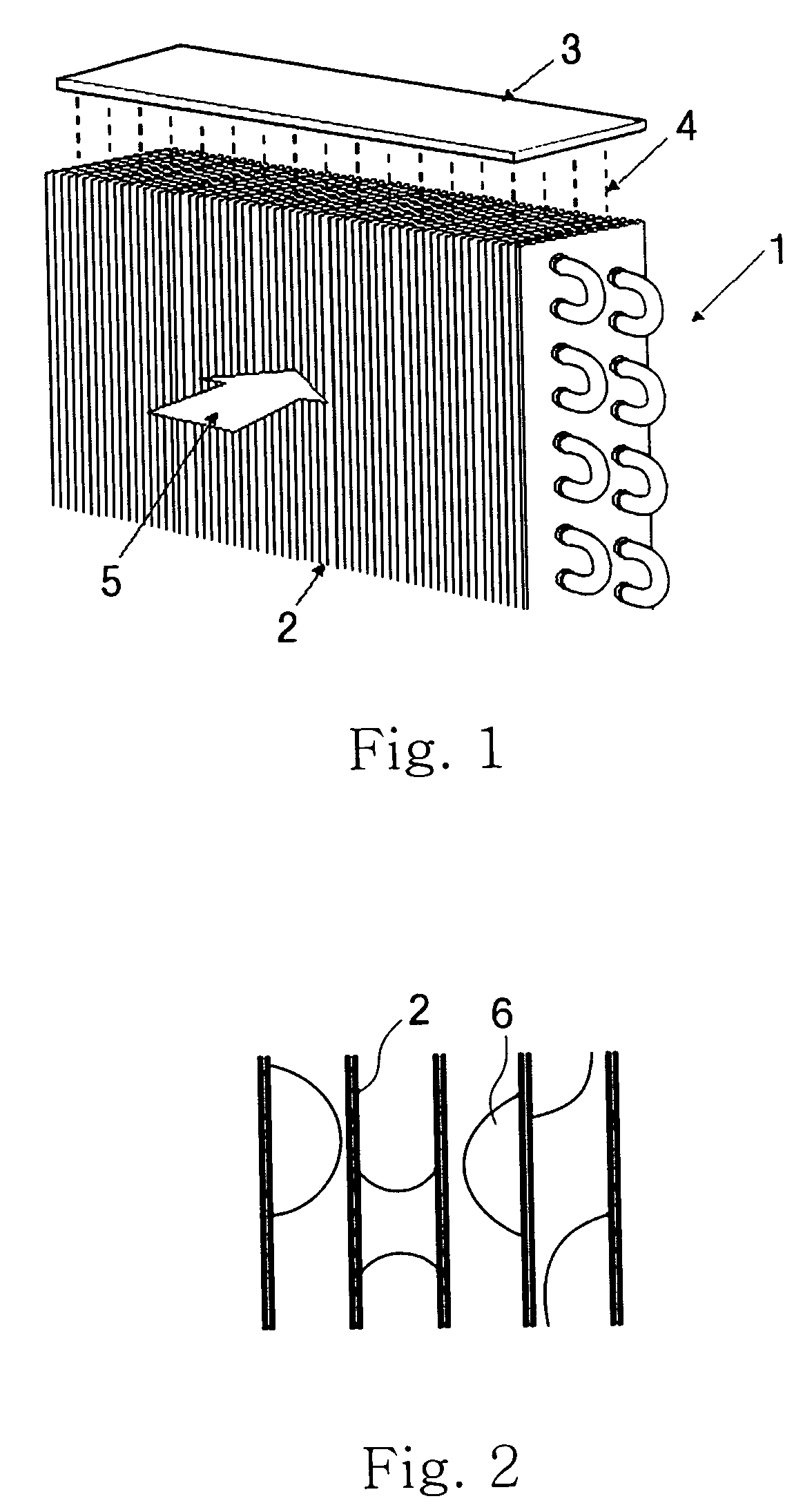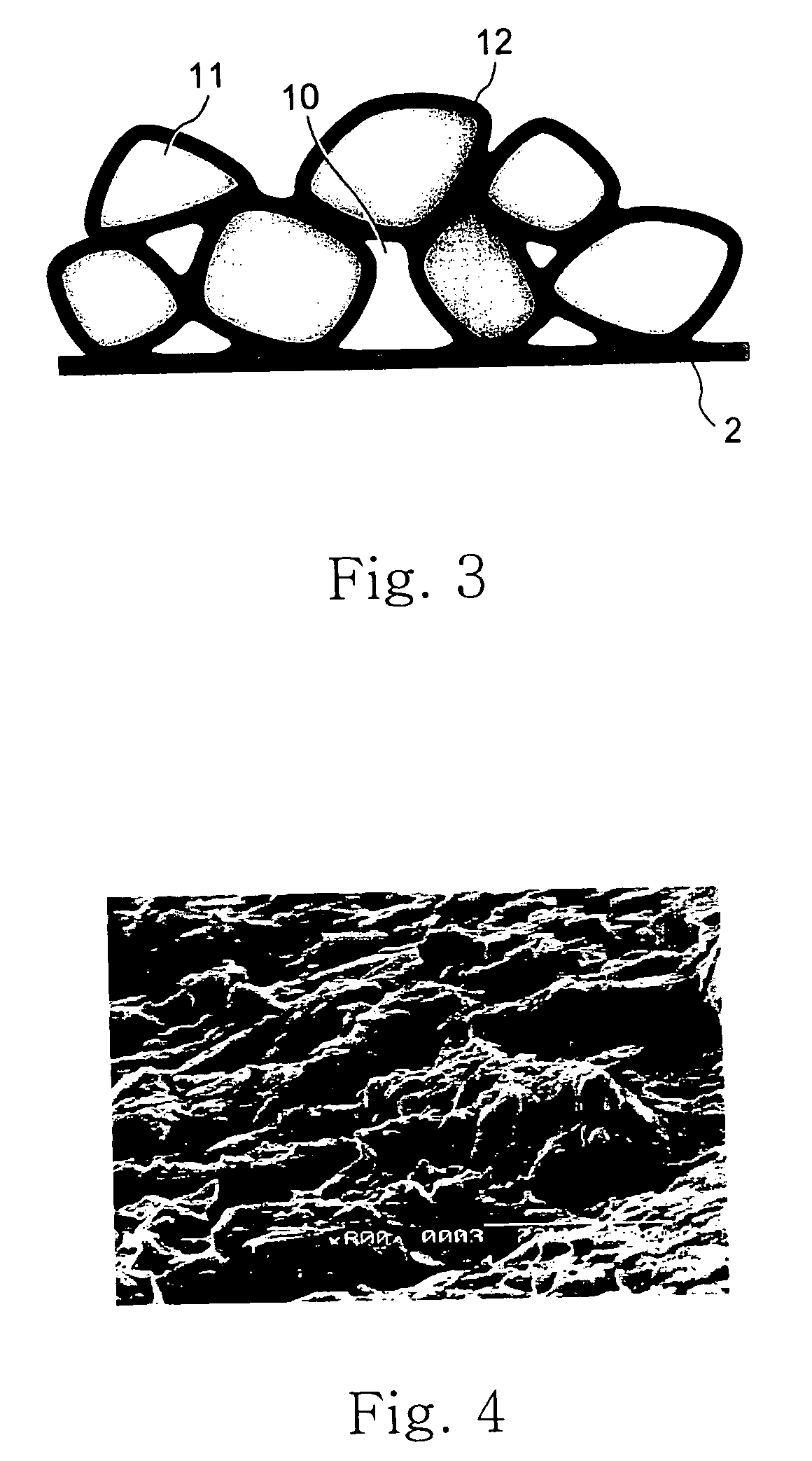Surface treatment method for improving the surface wettability of wet surface heat exchangers
a technology of heat exchangers and surface treatment methods, which is applied in indirect heat exchangers, milk preservation, lighting and heating apparatus, etc., can solve the problems of increasing flow resistance, limited use, and limited practicability of wet surface heat exchangers
- Summary
- Abstract
- Description
- Claims
- Application Information
AI Technical Summary
Benefits of technology
Problems solved by technology
Method used
Image
Examples
Embodiment Construction
[0024] Hereinafter, referring to appended drawings, the structures and the operation procedures of the embodiments of the present invention are described in detail.
[0025] In the present invention, so as to build the hydrophilic porous structure on the surface, the methods for treatment of the surface of a heat exchanger can be classified into two methods.
[0026] The first method shown in FIG. 3 is a so-called coating method, which is comprising of the operations of making the coating composition by blending micro solid particles with the hydrophilic binders; spreading the coating composition on the surface of a heat exchanger by means of spraying or dipping; and curing the coated surface of a heat exchanger, thereby transforming a solid surface into the improved surface having the hydrophilic porous structure.
[0027] FIG. 4 is a microphotograph, magnified 800 times, illustrating the surface that is treated by the first method. When the size of pores(10) in the porous structure is too ...
PUM
| Property | Measurement | Unit |
|---|---|---|
| hydrophilic | aaaaa | aaaaa |
| diameter | aaaaa | aaaaa |
| thickness | aaaaa | aaaaa |
Abstract
Description
Claims
Application Information
 Login to View More
Login to View More - R&D
- Intellectual Property
- Life Sciences
- Materials
- Tech Scout
- Unparalleled Data Quality
- Higher Quality Content
- 60% Fewer Hallucinations
Browse by: Latest US Patents, China's latest patents, Technical Efficacy Thesaurus, Application Domain, Technology Topic, Popular Technical Reports.
© 2025 PatSnap. All rights reserved.Legal|Privacy policy|Modern Slavery Act Transparency Statement|Sitemap|About US| Contact US: help@patsnap.com



